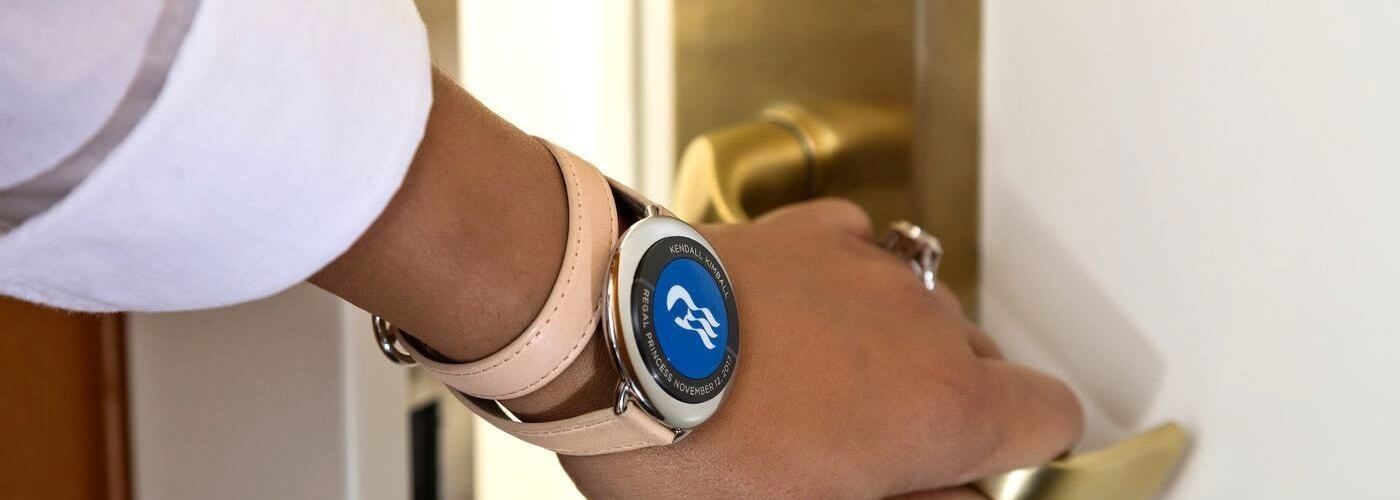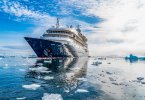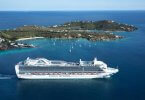Cruise lines once said to heck with tech. No longer. Welcome to high tech on the high seas.

Passengers wanted an unplugged vacation, cruise lines used to say. Internet access onboard was expensive and unreliable, but it wasn’t as though people were clamoring for that.
Oh, how that thinking has changed. Now cruise lines are racing to see which one can offer the most innovative technology at sea.
Besides better connectivity, cruise lines are using technology for practical purposes — eliminating lines, for instance — and some of it is designed to make the cruise experience more personal.
Take the innovative Ocean Medallion program, which soft-launched in November on Princess Cruises’ Regal Princess.
The system uses a small wearable token that stores information about the passenger to help customize the experience, the tech version of a butler who, say, remembers your favorite drink or opens your stateroom door for you.
Geotracking helps reveal your preferences by keeping track of where you are. If you’re at a wine tasting, it can suggest related activities.
But the tango with tech begins before cruisers even leave home. They can upload their passports to an app called Ocean Ready (available on IOS, Android and your web browser) and create an avatar that welcomes guests and serves as their “host” for the cruise.
Passengers also can watch videos about the ports of call and play games once they board.
One of the best aspects of the program, said John Padgett, chief technology officer at Carnival Corp., of which Princess is a part, is that it’s largely seamless. Cruisers, he said, are “not burdened with figuring out the technology.”
The Ocean Medallion program is scheduled to roll out across the Princess fleet this year and next, and is also expected to be used on several of the company’s other lines, including Holland America and Carnival, in the next few years.
Who are you?
Carnival Corp. is not the only one developing game-changing technologies.
Royal Caribbean Cruises (of which Royal Caribbean International and Celebrity Cruises are part) has been testing facial recognition technology as a means of streamlining embarkation.
An app-based geo-location program is being tested on Allure of the Seas that can, for example, allow guests to order drinks to be delivered anywhere onboard.
The app also can let guests see menus and the daily schedule of activities or book shore excursions, shows, dinner and spa appointments and could play a role in checking in passengers by way of a bar code.
Technological developments extend to staterooms
On Celebrity Cruises’ Celebrity Edge, expected to launch in November, guests can use a touch screen or an app to set temperatures and adjust lighting. Eventually, you’ll be able to ask for for turn-down service and fresh linens using that technology.
MSC Cruises has also been busy working on a technology-based program. Its “MSC for Me” program, launched on MSC Meraviglia, includes an app that allows you to text with fellow passengers, make restaurant reservations and book shore excursions.
And attention, Mom and Dad: The app lets you track your children on board thanks to more than 3,000 sensor beacons throughout the ship.
Staying connected
Those who sail on Norwegian Cruise Line’s Norwegian Bliss, which will launch this summer, can use the new Cruise Norwegian app that not only allows reservations and bookings but also lets passengers text and call anyone on or off the ship.
The app is complimentary, but the unlimited texting and calling comes with a one-time charge of $9.95 per person plus 79 cents a minute for worldwide calls. The line hopes to have the app available fleet wide by the end of the year.
High tech at play
The last decade has been about adrenaline-focused activities on mainstream cruise lines, including bumper cars, multisensory cinemas and race car simulators, but they’re not the only fun.
Royal Caribbean plans to offer an “X-ray vision experience” that allows guests to see through certain walls (very Superman-esque) and experience a virtual aquarium.
Driverless shuttles may be used to move passengers and crew around ports within the year.
All of this high tech coincides with serious improvements to Wi-Fi, designed to serve younger, always connected passengers.
Royal Caribbean launched Voom on Quantum of the Seas in 2014, bringing reliable Wi-Fi to the high seas that’s fast enough to allow passengers to stream Netflix or Spotify and make Skype or FaceTime calls.
Many of the large-ship,mainstream lines have followed with improvements.
Although passengers think most things will be better than at home (great food! nonstop entertainment! unending pampering!), Wi-Fi isn’t always one of them.
It will take a huge investment to bring all ships up to speed, but it seems a worthy goal. After all, for the next generation of cruise passengers, not being connected isn’t an option.







